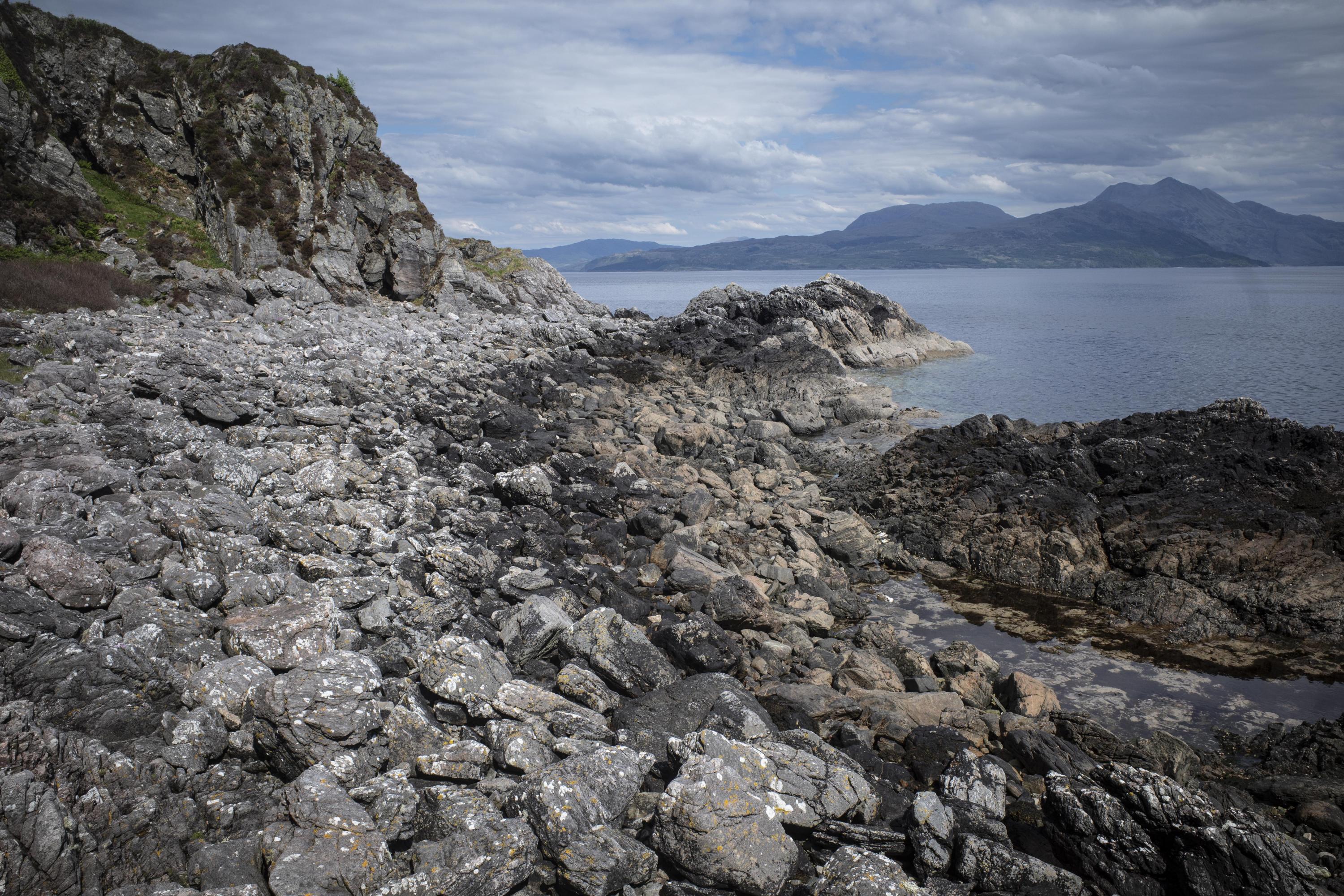Ard Ghunel
Geological Conservation Review site | GCR #875 | Structural and Metamorphic Geology | Moine
Geological Conservation Review site | GCR #875 | Structural and Metamorphic Geology | Moine
Scotland's geosites are chosen because of their local, national or international importance. Take only photos, leave only footprints: avoid causing any damage to this site. You can walk almost anywhere in Scotland without the need to ask permission or keep to paths, but you have a responsibility to care for your own safety, to respect people's privacy and peace of mind and to cause no damage.
The right of access does not extend to quarries, building sites or any land where public access is prohibited, or to the collection of geological samples.
Site Where Rare Zoned Pods Formed Through Metamorphic and Metasomatic Processes Acting On Lenticular Ultrabasic Bodies Within Lewisian Gneisses During The Caledonian Event.
In the Sleat Peninsula of Skye, zoned pods occur within the Lewisian gneisses of the Moine Nappe. The pods are variable in character but the type examples, exhibiting a zoned association of talc, actinolites and biotite, occur in the well-exposed coastal sections of Ard Ghunel. Geochemical evidence indicates that these pods originated as ultra-basites which reacted with the more acid surrounding gneisses during regional metamorphism, producing this remarkable zonation. Ultrabasic lenses do occur within the foreland Lewisian gneisses but are largely unzoned. Intense reworking is, therefore, thought to be responsible for the formation of the Skye pods. The development of zoned pods of this nature is an exceedingly rare phenomenon and their availablity for study is of the highest importance with regard to the determination of the mobility of elements during regional metamorphism.
Parking is limited but may prove possible, particularly out of season, around NG 703 125. Otherwise, parking at NG 69931 12759 adjacent to the old church and walking from there is a good alternative.
For those with limited time, the GCR site's south shore is the most accessible, though the initial exposures here are of Moine, the Lewisian commencing only after one has traversed some 900 metres from the single-track road at Camascross. On the north side, one must walk to the outcrops opposite the island of Isle Ornsay before the GCR site is reached.
Beaches and exposures are quite challenging in places. Suitable footwear, clothing and emergency equipment makes sense as this is a remote and scarcely visited location.
There are no site highlights yet.

#1: Overview of the Ard Ghunel peninsula from the west.
The GCR site boundary runs at the rear of the property boundaries best identified as the change in colour between the green of the gardens and the brown of the heathland running across the hillside in the middle distance.
Andy Leggatt
May 13, 2024

#2: Ard Ghunel from the north west. There are no really any useful exposures on this elevation.
Andy Leggatt
May 13, 2024

#3: Looking along the south coast of Ard Ghunel from an outcrop of Morar Group Psammite. Druim Ban, the hill in the middle distance just to the left of centre, is included in the GCR site and the shore along the base of its cliffs is where the best exposures were originally found. The GCR site description notes that over-collecting has damaged the site.
Andy Leggatt
May 13, 2024

#4: cliff line below Druim Ban looking east.
The BGS viewer describes the rocks in the foreground as Moine psammites of the Morar Group, and rocks of Lewisian age outcropping in the distance.
Andy Leggatt
May 14, 2024

#5a: this is the eastern extremity of the Ard Ghunel peninsula, where the best exposures were originally found.
The beaches shown in images #5b and #5c may be seen here, on either side of this headland.
Andy Leggatt
May 14, 2024

#5b: this beach is located just to the south-west of the eastern extremity of the peninsula. Here, the beach boulders take on a very different weathering character, whilst concealing much of the rock outcropping on what seems to be a relict shore platform.
Andy Leggatt
May 14, 2024

#5c: this beach is located just to the north-west of the eastern extremity of the peninsula. The rocks flanking the beach, and the cobbles between, are perhaps more typical of Lewisian gneiss.
Andy Leggatt
May 14, 2024

#6: this, the north side of Ard Ghunel remains Lewisian in age, with the GCR site boundary encompassing the outcrop seen here on the left, before cutting inland some 50 metres and running parallel to the high water mark back towards the village.
Andy Leggatt
May 14, 2024